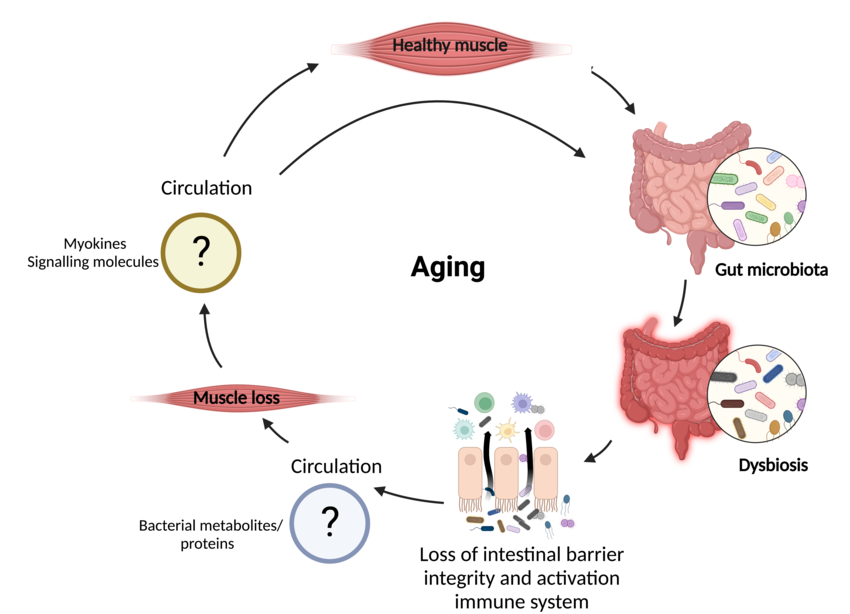Frailty is a major challenge for elders and its most obvious sign is the involuntary loss of skeletal muscle mass and function (sarcopenia). It is related to a series of economic and social implications, including hospitalization, morbidity, and mortality. A major challenge in finding a treatment for sarcopenia is its multifactorial origin. It involves several pathophysiological mechanisms and the cross-talk between different organs. The promising research endeavours in this area are the identification of early biomarkers and actionable mechanisms. Age-related dysbiosis has been recently proposed as a hallmark of ageing. We hypothesize that dysbiosis plays a key role in the development of sarcopenia. This may represent a key biomarker regulating the transition between healthy, pre-frail and frail. Using a multi-omic approach we will now dissect the role of gut microbiota in the development of sarcopenia and identify tissue cross-talk regulators modulated by the microbiota.
The ability to manipulate the microbiota holds great potential towards improving human health. By identifying bacterial species and their metabolites that regulate key signaling/cellular processes in sarcopenia during ageing, this proposal will create new therapeutic opportunities. Further, it can lead to the identification of early predictive molecular biomarkers of sarcopenia that may inform medical decisions based on the future profiling of a patient’s genetics and microbiome function.

Bana, B. et al., Annu Rev Genet, 2019. 53: p. 239-261. DOI: 10.1146/annurev-genet-112618-043650
Pryor, R., et al., Cell. 2019 Sep 5; 178(6): 1299–1312.e29.
Scott, T.A., et al., Cell. 2017 Apr 20; 169(3): 442–456.e18.
Solagna, F., et al., Acta Physiol (Oxf). 2020 Sep; 230(1): e13496.
Solagna, F., et al.,J Clin Invest. 2021 Jun 1; 131(11): e135821.
Corrado, M., et al.,Cell Metab. 2020 Dec 1; 32(6): 981–995.e7.
Corrado, M. et al., J Clin Invest. 2022 Jan 4; 132(1): e148546.

CECAD Excellent in Aging Research
CMMC - PI - B 02
show more…+49 221 478 84390
CECAD Excellent in Aging Research
Joseph-Stelzmann-Straße 26
50931 Cologne
CECAD
MRC London Institute of Medical Sciences
Institute for Genetics
Cologne Graduate School

CECAD Research Center
CMMC - PI - B 03
CMMC - PI - CAP 21
CMMC - Co-PI - B 02
+49 221 478 84167
CECAD Research Center
Joseph-Stelzmann-Str. 26
50931 Cologne
CECAD
CRC 1218 - Mitochondrial regulation of cellular function
Cologne Graduate School
Institute for Genetics

CECAD Research Building
CMMC - Co-PI - B 02
show more…CECAD Research Building
Joseph-Stelzmann-Straße 26
50931 Cologne
Lab Manager
Chrysa Nikopoulou
PostDoc
Francesca Solagna, Daniel Martinez-Martinez,
Tanara Peres
PhD student
Jennifer Van der Laan, Marie Blickling,
Andreea Aprodu, Kristin Gehling
Master student
Hyejin Hwang
Technician
Ayesha Safoor